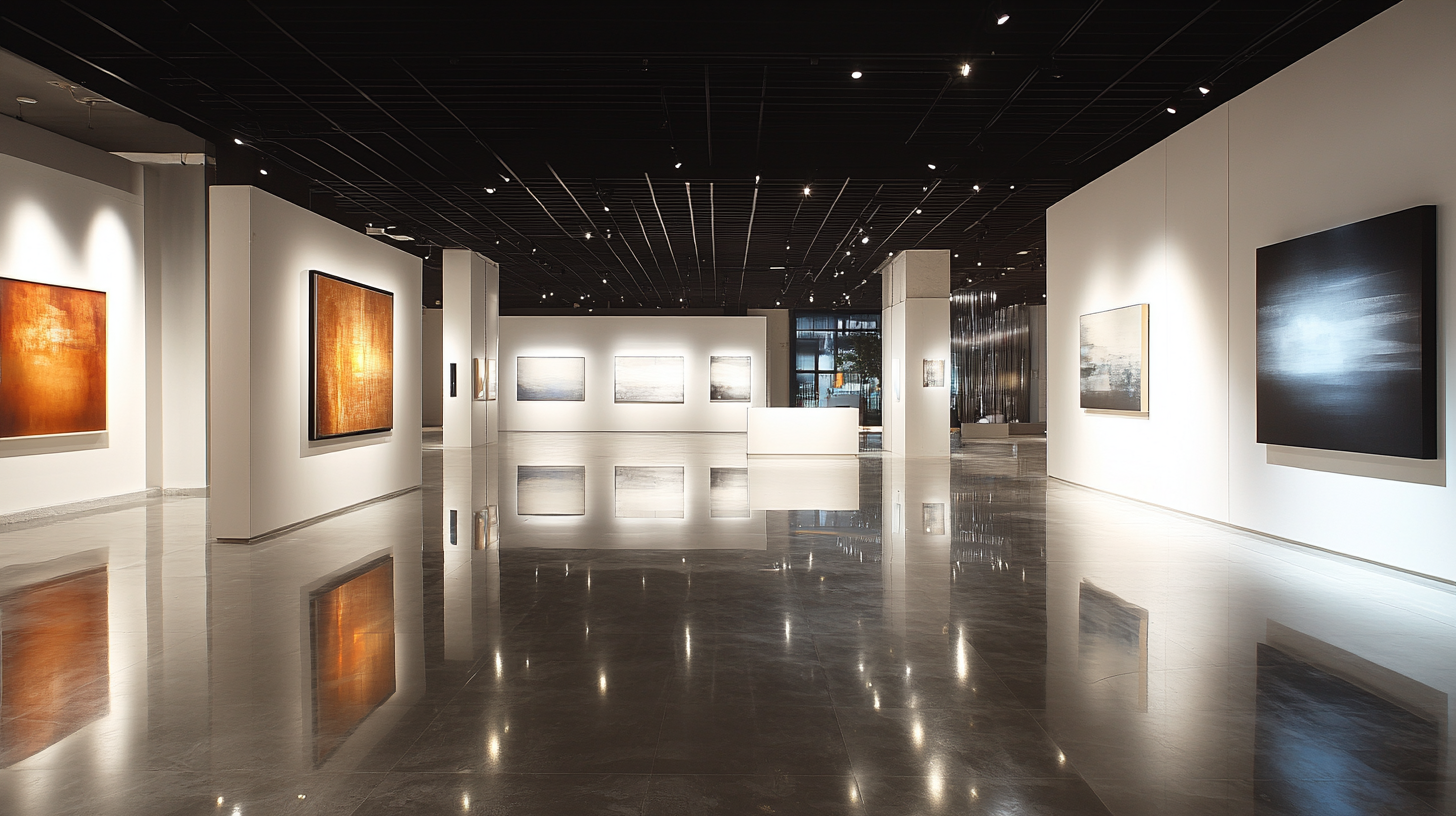Essential Guide: 7 Key Factors Global Buyers Must Consider When Sourcing from a Lighting Gallery
In the rapidly evolving world of lighting design, the role of a Lighting Gallery is more crucial than ever for global buyers seeking innovative and quality products. According to a report by the International Energy Agency, the global lighting market was valued at approximately $100 billion in 2021, with projections indicating steady growth driven by advances in LED technology and smart lighting solutions. This not only underscores the importance of lighting in both residential and commercial spaces but also highlights the rich diversity of products available through specialized lighting galleries.
As global buyers embark on sourcing from these galleries, several key factors must be considered to ensure they choose the best options for their projects. Industry insights from the American Lighting Association reveal that buyers who engage with reputable lighting galleries benefit from enhanced design expertise and curated selections that align with contemporary trends. Therefore, understanding these critical considerations is essential for navigating the expansive offerings and making informed decisions that will meet both aesthetic and functional needs.

Identifying Quality and Style: What to Look for in Lighting Products
When sourcing lighting products from a gallery, understanding quality and style is paramount. Buyers should closely examine the materials used in light fixtures, as high-quality metals and robust glass not only ensure durability but also contribute to the overall aesthetic. For example, fixtures made from brass or stainless steel tend to offer a timeless look while providing resilience against wear and tear. Additionally, consider the craftsmanship involved; detailed finishes and thoughtful design elements can elevate a lighting product from ordinary to exceptional. Style plays an equally crucial role in the selection process. Lighting is not just a functional requirement; it also serves as a statement piece in home décor. Buyers should identify the styles that harmonize with their space—be it industrial, contemporary, or vintage. Current trends highlight the appeal of smart outdoor lighting, which combines functionality with sophistication, allowing homeowners to enhance their outdoor spaces efficiently. Incorporating these elements can transform yards, pathways, and patios, adding both flair and security. Furthermore, understanding the versatility of lighting products can maximize their appeal. With a growing market for smart home devices, more consumers are looking for lighting that can be integrated into their modern living environments. Choosing fixtures that support smart technology not only meets contemporary demands but also positions buyers favorably in a competitive market. As we move into 2025, keeping an eye on emerging trends will be essential for making informed sourcing decisions that resonate with global buyers.

Understanding Pricing Structures and Negotiation Tactics
When sourcing from a lighting gallery, understanding pricing structures and effective negotiation tactics can significantly impact your procurement outcomes. The current economic climate has introduced complexities such as rising costs, making it imperative for global buyers to approach negotiations with a strategic mindset. Recent studies indicate that companies can reduce procurement costs by up to 20% through effective negotiation techniques and by leveraging data and analytics to inform their strategies.
One crucial aspect of negotiation is listening. If the initial discussions with suppliers become tense, allowing them to express their concerns can build a rapport and create a more collaborative environment. Research shows that demonstrating empathy during negotiations can lead to better outcomes; it reduces defensiveness and opens up pathways for profitable concessions. Moreover, employing tactics such as “phantom anchors” – making aggressive initial offers that can be softened later – can help achieve economic gains while maintaining healthy supplier relationships.
Additionally, it’s vital to navigate the nuances of pricing structures effectively. Buyers should arm themselves with industry knowledge and past pricing data to challenge suppliers' proposed prices with confidence. According to reports, suppliers may inflate prices by as much as 15% to 25% during negotiations, relying on the lack of market insight from buyers. By preparing a comprehensive understanding of market trends and competitor pricing, buyers can not only negotiate better deals but also foster long-term partnerships with their suppliers.
Embracing these tips and strategies in your negotiation approach will equip you with the necessary tools to secure favorable terms and optimize your sourcing operations.

Assessing Supplier Reputation and Customer Service Standards
When sourcing products from a lighting gallery, one of the most critical factors to evaluate is the reputation of the supplier. A strong, positive reputation often indicates that a supplier is reliable and has a track record of customer satisfaction. Buyers should research the supplier’s history, including their experience in the industry and feedback from previous clients. Checking online reviews, testimonials, and industry awards can provide further insight into the supplier's reliability and quality of service.
Additionally, assessing customer service standards is paramount in establishing a successful sourcing partnership. A supplier should be responsive, transparent, and willing to address any concerns or queries promptly. During initial communications, it is essential to evaluate how they handle inquiries and whether they are knowledgeable about their products. High levels of customer service not only ensure a smoother purchasing experience but also play a vital role in post-sale support, such as handling returns or product defects. A supplier that prioritizes customer service can contribute significantly to smoother operations and greater satisfaction for global buyers.

Exploring Sustainable and Eco-Friendly Lighting Options
When sourcing lighting options, global buyers are increasingly prioritizing sustainability and eco-friendliness. The lighting industry has made significant strides in developing products that not only illuminate spaces but also minimize environmental impact. As buyers investigate products from lighting galleries, they should pay close attention to materials and manufacturing processes. For instance, eco-friendly products often utilize sustainable materials, such as reclaimed wood or recycled metals, and non-toxic finishes that reduce harmful emissions.
In addition to materials, energy efficiency is a crucial factor to consider. LED lights, for example, not only reduce electricity consumption compared to traditional bulbs but also have a longer lifespan, which means less waste over time. Buyers should inquire about certifications like ENERGY STAR to ensure that the lighting options they choose meet high efficiency standards. Additionally, integrating smart lighting solutions can optimize energy use, allowing users to control their lighting based on occupancy and natural light availability.
Finally, consider the overall design and adaptability of the lighting solutions. Sustainable lighting doesn’t mean compromising on style; many modern designs incorporate natural elements and can be easily adapted to various settings. By focusing on eco-friendly options that blend form and function, global buyers can make informed decisions that contribute to a sustainable future while enhancing their spaces' aesthetic appeal.
Navigating Shipping and Delivery Logistics for Global Sourcing
When sourcing from a lighting gallery on a global scale, navigating shipping and delivery logistics is crucial to ensuring products arrive on time and in perfect condition. One of the first steps is understanding the different shipping methods available. Depending on the urgency of your order, you may choose between air freight, which is faster but more costly, and ocean freight, which is economical for bulk shipments but takes longer. Assessing your timeline and budget can help align your shipping method with your business needs.
Additionally, understanding customs regulations is a vital component of the logistics process. Each country has specific rules regarding imports, and being aware of tariffs, duties, and the necessary documentation can prevent unexpected delays. Collaborating with knowledgeable freight forwarders or logistic partners is essential, as they can provide insights into the latest regulations and help facilitate smoother customs clearance.
Finally, don’t overlook the importance of tracking and communication throughout the shipping process. Investing in a reliable tracking system allows you to monitor your shipment in real time, providing peace of mind and the ability to inform your clients accurately about delivery timelines. Furthermore, establishing clear lines of communication with both your supplier and the shipping company can ensure that all parties are aligned and ready to address any challenges that may arise. Ultimately, taking these logistics factors into account can significantly enhance your global sourcing experience.

